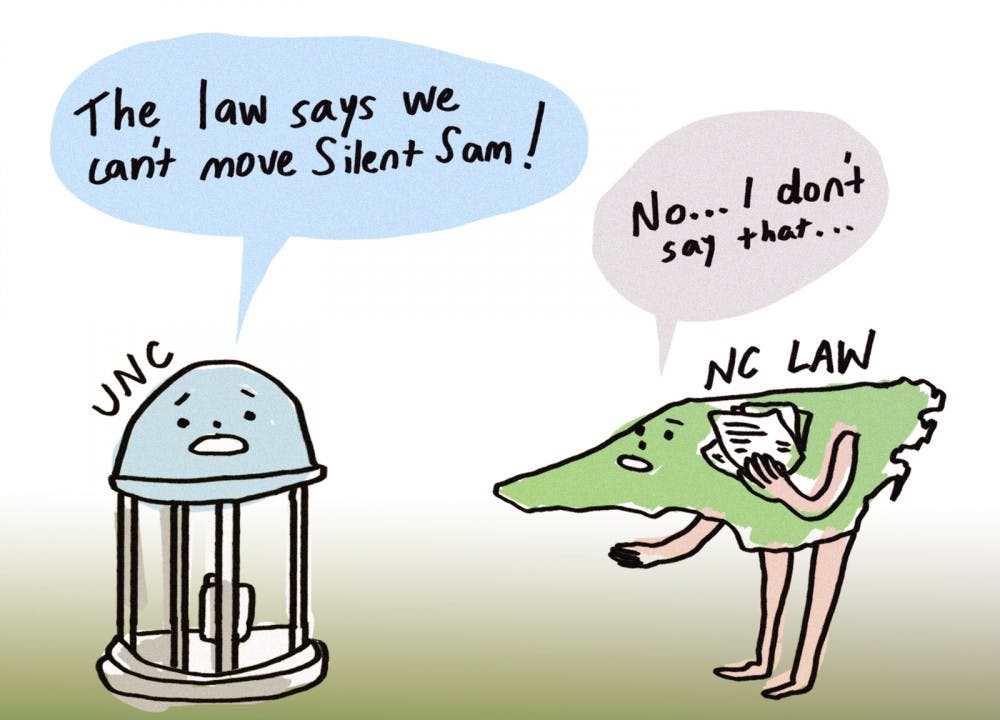Last week a video surfaced online of a man whaling on Silent Sam’s face with a hammer. The video was apparently recorded last August, a day after a group of people destroyed a similar Confederate statue up in Durham.
Since August, Confederate statues have come down across the South. But not Silent Sam.
The main reason our statue remains, we’ve been told, is a law: Section 100-2.1 of the North Carolina General Statutes, entitled “Protection of Monuments, Memorials, and Works of Art.” We’ve been told that this law is complicated and unclear – a knot that only the State Historical Commission can possibly untangle.
That’s not true. The law’s pretty clear, actually. And it allows Silent Sam to be moved.
Here, in layman's terms, is what the law does.
It has three pieces. The first piece states a rule. The second piece gives some details about the rule. And the third piece mentions a couple of situations where the rule doesn’t apply.
It’s a little easier to follow if we take the three pieces out of order, putting the third one second and the second one third. If we do that, the law goes like this:
1. The Rule: A thing like Silent Sam can’t be moved without the Historical Commission’s say-so.
2. The Rule doesn’t apply at all (meaning that the State Historical Commission’s say-so is not needed) in three situations:




